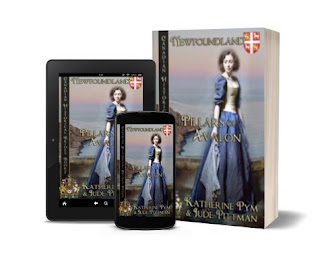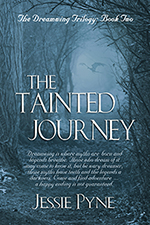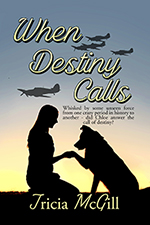Click on the cover to see more!
The week of May 10 to 13, I had
the pleasure of being on a mystery writer panel courtesy of the Crime Writers
of Canada and the Ontario Association of Library Technicians. In fact, there
were several panels running over four days and great opportunities to virtually
meet other authors and hear their stories.
My own schedule didn’t allow me to
watch the first four panels, but it was fun to be a part of the Killing Them
Softly: Cozy Mysteries panel.
As a moderator, Lynn McPherson was right on top of
everything. The questions, the time, and any questions and comments from the
audience of about 40 members. We each answered not only prepared questions, but
a few extras, which worked out well since we were missing one of the panelists. Those who were featured were: Lynn McPherson (Izzy Walsh Mystery series), Diane Bator (Glitter Bay Mysteries, Gilda Wright Mysteries, etc), Ginger Bolton (Deputy Donut Mystery series), Winona Kent (Jason Davey Mysteries), Peter Kingsmill (our missing author of Awan Lake series).
One of the first questions was:
What is a cozy mystery? According to author Ginger Bolton: https://cozy-mystery.com/Definition-of-a-Cozy-Mystery.html
·
Cozy mystery readers are intelligent people looking for a “fun read” that engages the mind, as
well as provides entertainment.
· The
crime-solver in a cozy mystery is usually a woman who is an amateur sleuth.
·
The cozy mystery usually takes place in a small town or
village. The small size of the setting makes it believable that all the
suspects know each other.
·
Although the cozy
mystery sleuth is usually not a medical examiner, detective, or police officer,
a lot of times her best friend, husband, or significant other is.
·
The local police force doesn’t take the amateur sleuth very
seriously.
·
More and more, cozy mystery books are being written as parts
of a series. The reader becomes emotionally involved and connected with the
reoccurring characters.
· The
characters are likeable.
·
Cozy mysteries are considered “gentle” books… no graphic
violence, no profanity, and no explicit sex. Most often, the crime takes place
“off stage” and death is usually very quick.
·
Sex (if there is any) is always behind closed doors. It is
implied…. at most!
· Cozy
mysteries tend to be fast-paced, with several twists and turns throughout each
book.
· The
cozy mystery puts an emphasis on plots and character development.
One of the other things we
established during the panel was that many cozies have pets, usually cats and
dogs, who sometimes help the amateur sleuth to solve the case. (for examples,
Audra Clemmings has her dog Drake in my book Drop Dead Cowboy.)
As well, most cozies involve bed
and breakfasts; anything to do with food; crafts such as quilting, knitting,
and sewing; fashion and small shops (like Vintage Sage in my Glitter Bay
Mysteries); and libraries or bookstores. A few, like my Gilda Wright mysteries
that feature a martial arts school, have main characters who have jobs in the
community such as carpenters, hairdressers, baristas, event planners, real
estate agents, and more!
Secondary characters in a cozy are
fun to write. They can serve not only as a second set of eyes and ears for the
sleuth, but as comic relief when the going gets tense. Sometimes, they can also
the one who keeps the amateur sleuth going when they may be ready to give up
and have a hand in solving the crime. Or at least be the lookout while the
sleuth wraps things up.
The number one thing a good
amateur sleuth needs, however, is a solid reason for wanting to solve the
crime. Whether it be because the victim was someone they knew, they want to be
a police office and figure a little practice is a good thing, or someone they
know is suspected of the crime and they are driven to prove their innocence.
We had some very interesting panels that offered an amazing lineup of authors:
Clearly Canadian: All Canadian settings, eh? with Ann Shortell, Dave Butler,
Susan Calder, Rosemary McCracken, David Poulsen, Iona Whishaw.
Nuances of Crime: Suspense, Thriller and Noir with Del Chatterson, S.M.
Freedman, Hannah Mary McKinnon, C.S. O'Cinneide, Joanna Vander Vlugt.
The Long and the Short of It: Writing short stories
and novellas
with Judy Penz Sheluk, M.H. Callway, Barbara Joyce-Hawryluk, Merrilee Robson,
Melissa Yi.
Law and Order: Police Procedurals with Desmond Ryan, Jen. J. Danna,
Ardelle Holden, Jim Napier, Garry Ryan.
Killing Them Softly: Cozy Mysteries with Lynn McPherson (Izzy Walsh Mystery series), Diane Bator (Glitter
Bay Mysteries, Gilda Wright Mysteries, etc), Ginger Bolton (Deputy Donut
Mystery series), Winona Kent (Jason Davey Mysteries), Peter Kingsmill (our
missing author of Awan Lake series).
Whodunnit: The Mystery Panel with Cathy Ace, J.J. Dupuis, Ann Lambert, Ross Pennie, Robert
Rotenberg.
Make 'Em Laugh: Comic Relief to Comic Caper with Melodie Campbell, Alexis
Koetting, Michael Michaud, Caro Soles, Gabrielle St. George.
True Crime…can be stranger than Fiction with Nate Hendley, Norm Boucher,
Dean Jobb, Lorna Poplak.
Evening Panel with Gail Bowan, Brenda Chapman,
Vicki Delany, Barbara Fradkin, and moderator Melodie Campbell.
Watch for my newest book coming in August 2021...
Gilda Wright is back! This time she needs to catch a killer who nearly murders the man she loves!



 `
`

















